Oldenburg (pop 168,000) is situated at the Rivers Hunte and Haaren between the cities of Bremen in the east and Groningen (Netherlands) in the west. Oldenburg is connected to shipping through the Küstenkanal, a ship canal connecting the rivers Ems and Weser, with 1.6 million tons of goods annually, it is the most important non-coastal harbour in Lower Saxony. Bicycles play a very important part in personal transport.
The city is surrounded by large agricultural areas, about 80% of which is grassland with livestock, especially dairy cows, crops such as grains for food and animal feed, as well as asparagus, corn, and kale.
More recently Osnabrück has become well known for its industry: automobile, paper, steel and grocery sectors. In spite of the massive destruction inflicted on the city during WW II, the old town was eventually reconstructed. 22,000 students study at the University and the University of Applied Sciences. Although part of the state of Lower Saxony, historically, culturally and linguistically, Osnabrück is considered part of the region of Westphalia.
Felix Nussbaum Haus and Museum of Cultural History houses the paintings of German-Jewish painter Felix Nussbaum who died in the Holocaust. The building also focuses on racism and intolerance. The museum has 3 parts with ~160 paintings: Nussbaum’s prewar art, the paintings made while in hiding from the Nazis (it evokes the cramped quarters in Brussels where Nussbaum painted his last canvasses and last the artist’s newly discovered paintings.
The interior is labyrinthine and many paths lead to dead ends. The museum’s sides face three cities where Nussbaum studied art: Berlin, Rome, and Hamburg. The fourth side faces the concentration camp where he was killed. The narrow tunnel and subdued lighting impose an atmosphere of oppression.
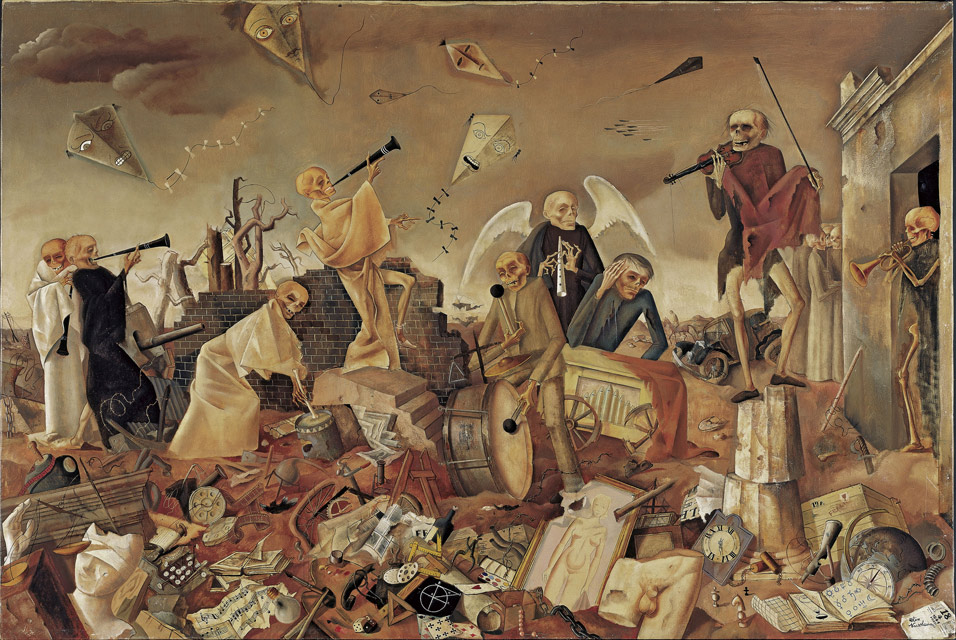

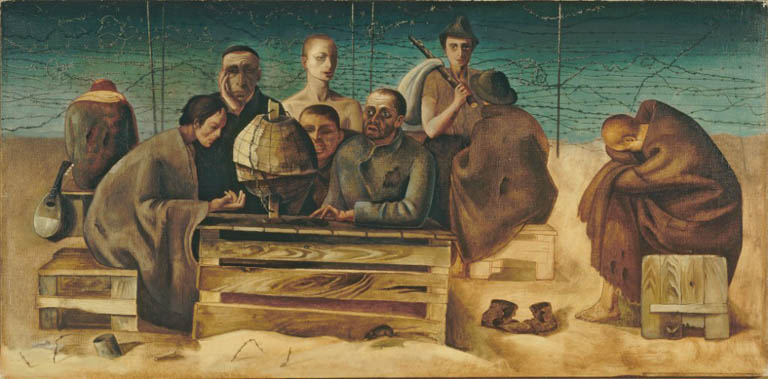
Self portrait with Jewish passport
Osnabruck Zoo. In the SE outskirts of the city, it has a wide range of African and North American animals, almost 2200 animals from 289 species. It is famous for the Grolar Bear, a grizzly–polar bear hybrid, a rare ursid hybrid that has occurred both in captivity and in the wild. In 2006, the occurrence of this hybrid in nature was confirmed by testing the DNA of a unique-looking bear that had been shot near Sachs Harbour, Northwest Territories on Banks Island in the Canadian Arctic. Two grizzly–polar hybrid cubs (one female and one male) were born at the zoo in 2004 – their bodies are smaller than polar bears, but larger than grizzlies, while their heads fall between the broader grizzly head and the leaner polar bear head. They have long necks like polar bears, but small shoulder humps like grizzlies. The soles of their feet are partially covered in hair; polar bears have hair-covered soles, which act as insulation, and grizzlies have hairless soles. Similarly, the hair of the hybrids exhibits a pattern of hollowness, which blends the traits of both polar bears and grizzlies. In cross section, the hair of polar bears is hollow, while the hair of grizzlies is either solid or has small hollow regions.
At the entrance is a Planetarium and Natur Museum.
Fagus Factory is a shoe last factory (in 1910, orthopedic shoe lasts were rare) in Alfeld on the Leine, an important example of early modern architecture. Commissioned by owner Carl Benscheidt who wanted a radical structure to express the company’s break from the past, it was constructed between 1911 and 1913, with additions and interiors completed in 1925. It has corners free of supports, and glass surfaces between piers that cover the whole height of the building and the piers are recessed leaving the glass surface to the front.

Germany – Lower Saxony (Hannover, Braunschweig) August 28-29, 2019
LÜNEBURG
Luneburg University’s Libeskind Building. In the NM “Modern Architecture Buildings” series, this aluminum clad building is all angles, the windows, interior, exterior sides. The most prominent is a 45° “prow” that extends above the entrance.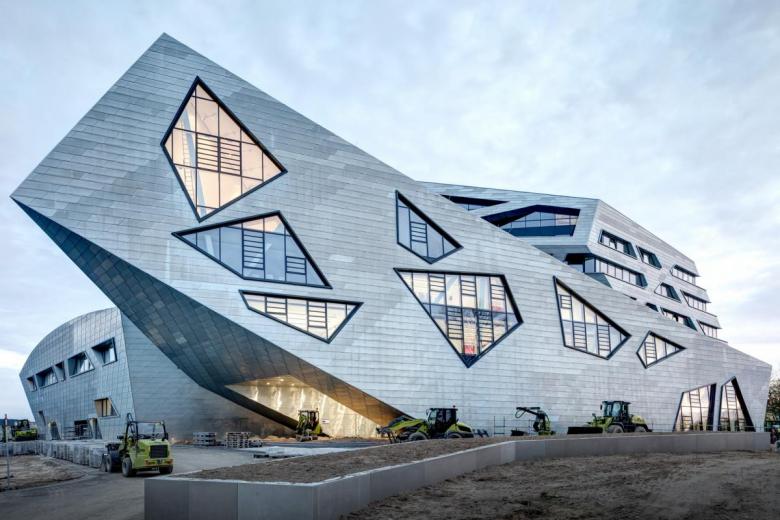
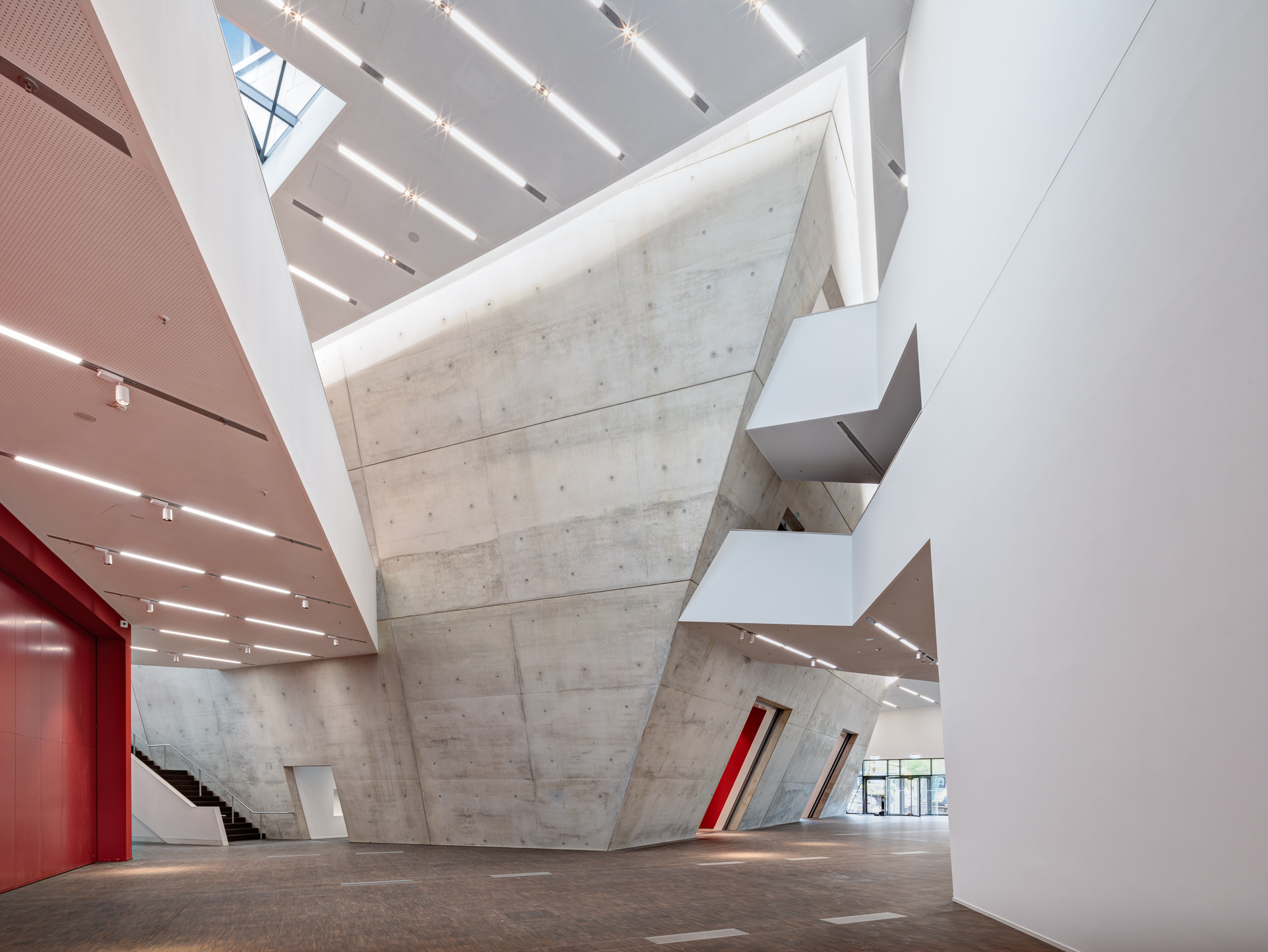
Dat ole Huus, Wilsede. This house is one of many ancient houses and farms (most from the 1700’s but a few older and many newer, almost all have thatched roofs, post and beam construction with plank walls) in the Luneberger Heide, a nature park where vehicles aren’t allowed (although I unknowingly drove in). The cobble roads are paralleled by dusty dirt tracks for all the horse-drawn carts and carriages, the main method of transportation – and filled with a lot of old people. Bicycles are also common although the tracks are not suitable for them.
Dat ole Huus is a half-timbered house with red brick fill and a thatch roof. It is full of ethnographic material – farm equipment, kitchen, butter churns etc. Only German. €3, no reduction.
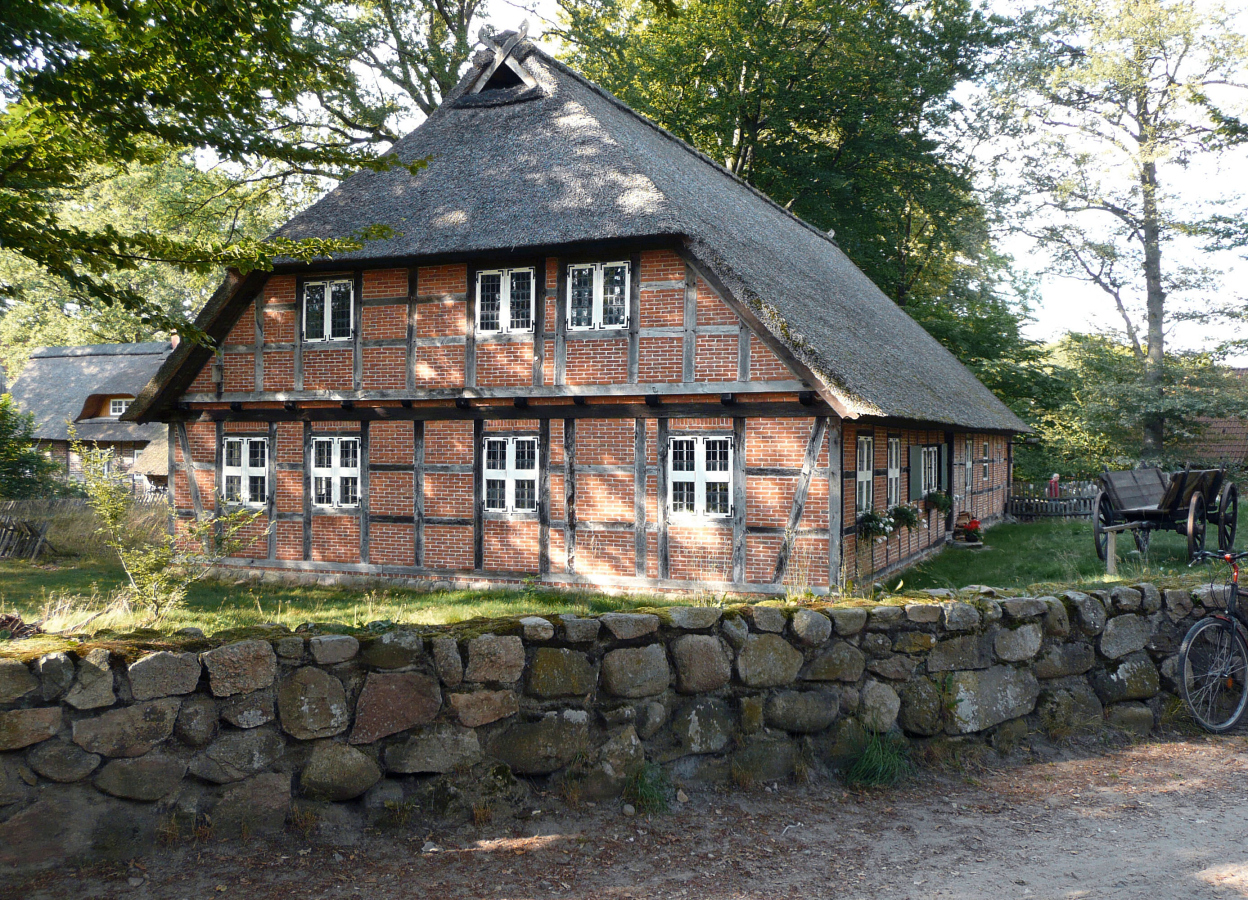
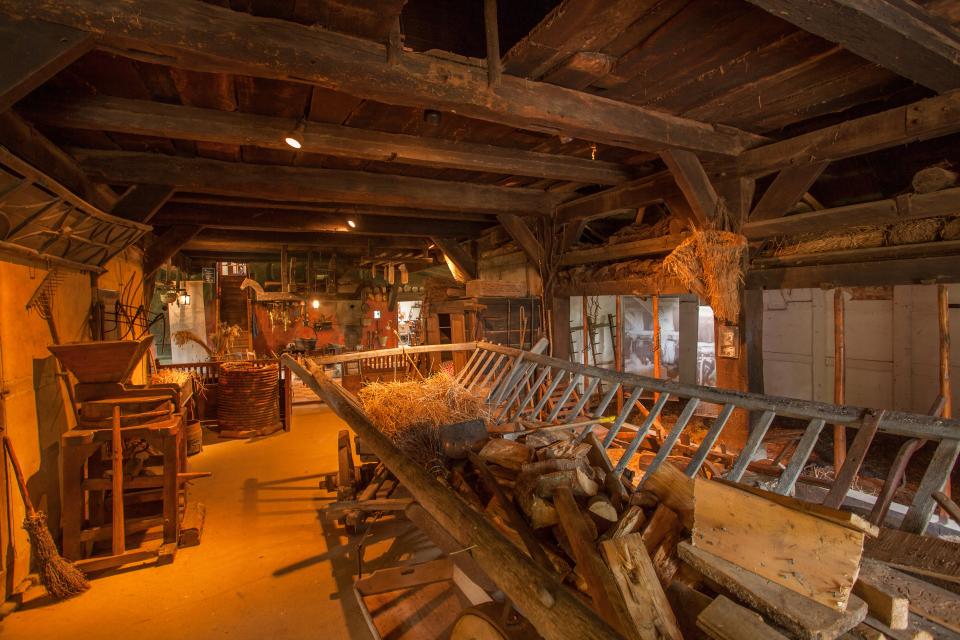
Heide Park Resort. This theme park has all the rides including 16 food venues and 7 thrill-seeker rides, mostly roller coasters. €39 for all day
Rischmannshof Heath Museum, Walsrode. An open-air museum with mostly 2-story half timbered houses but also post and beam with plank siding. All have thatched roofs. Contain period furniture. €2.50
HANOVER
Hannover Hbf, With a nice older brick fronted building, the majority of the station is a new addition with 2 levels of shops including a Lidl. Trains leave from the basement level.
HILDESHEIM
St Mary’s Cathedral and St Michael’s Church. This World Heritage listed cathedral is quite disappointing as it is a 2011-15 renovation that makes the church look new.
The first church here was built by the son of Charlemagne between 851-875 where a silver vessel containing a fragment of the cloak of Mary was discovered (where the thousand-year-old rose grows outside the apse). Over the centuries it underwent constant changes: the nave was destroyed by a fire and rebuilt from 1054-79, the Gothic side chapels added in 14th and 15th centuries and finally changed to Baroque style in 17th and 18th centuries. It was totally destroyed on March 22, 1944 and was rebuilt in the 11th century style.
Highlights: Doors of St Bernard – the oldest bronze doors of the middle ages with two wings of 8 panels each. Bronze font from 13th century with the Virgin Mary and baptism of Christ. Wheel chandelier – 18 feet across, it is the largest extent chandelier of the Middle Ages. Wheel chandelier in the apse is also from the Middle Ages. New crystal cross on the 11th century Easter candlestick. Eagle lectern. Christ’s column – 24 scenes form the life of Christ wind their way up a spiral on the black marble column. Crypt – bejewelled brass reliquary of the Virgin Mary and a 14th century polychrome of the virgin and baby with tiny jewelled crowns. Thousand year rose is many centuries old and climbs the outside of the apse.
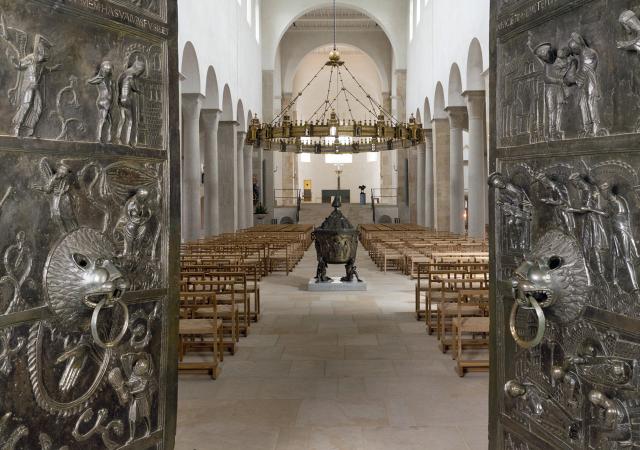
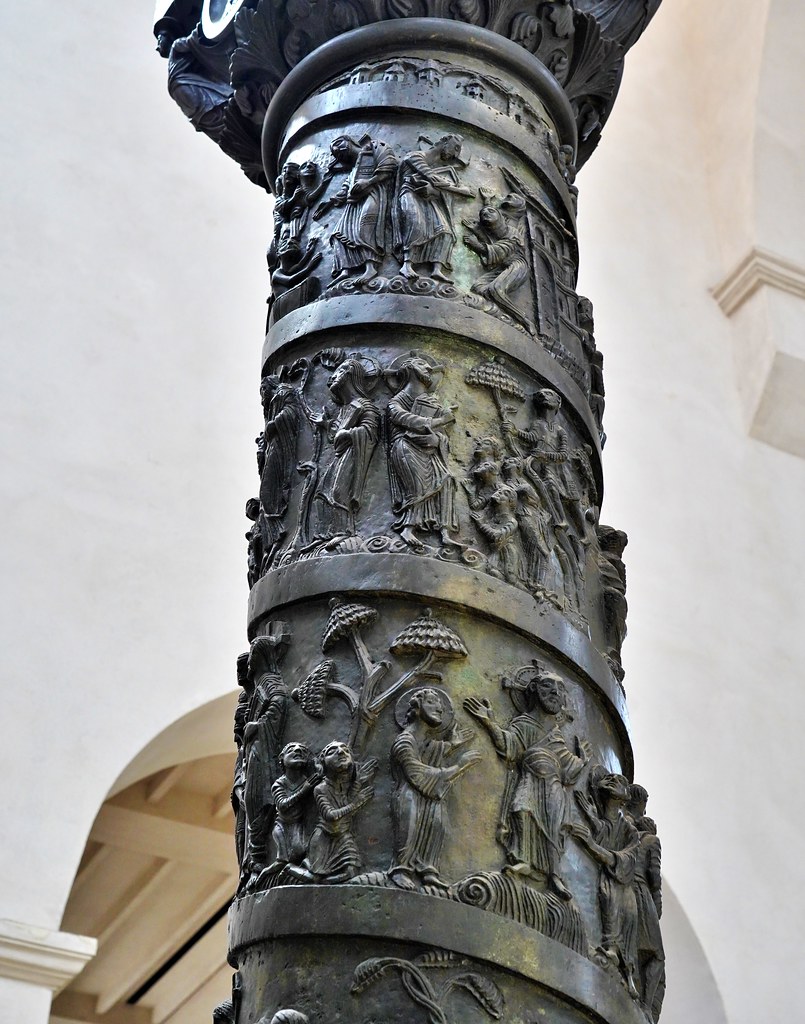
BRAUNSCHWEIG
Dankwarderode Castle (Herzog Anton Ulrich {1633-1714} Museum). This majestic 3-story stone palace holds an art museum. The 2nd floor was closed and the first has 3 centuries of art dating from the 1500s, the sort of art I don’t enjoy much. It has a Rembrandt, Reubens and a Vermeer. Normally €9, reduced to 6 with the closed floor.
Botanical Garden of TU Braunschweig. This is a lovely small garden. The cacti and some amazing water plants, a few big trees. Free
WOLFSBURG
Fallersleben Castle. This 3-story half-timbered manor house houses the museum on August Hoffmann (1798-1874) who was born in Fallersleben where is father was mayor. The town becomes part of the French kingdom of Westphalia. He is a poet and researches German culture, becoming a professor at Breslau University. He fought against aristocratic rule, censorship and wrote critical songs getting himself dismissed from the university. In the next 7 years he spent no longer than one week anywhere and is disappointed that the 1848 revolution re-established the old order. In 1849, at age 51, he marries his 18-year old niece, has 4 children (wife and 3 children die in 1860) and lives life as a librarian in Corvey. He has significant income from his folksongs written with simple rhyming lyrics and music. He composed the German national anthem, “The Song of the Germans” that was adopted in 1990. Free `
Wolfsburg Planetarium. Has a regular series of shows showing all elements of astronomy. €6, no reduction
Automuseum Volkswagen. Construction started in 1938 but was subverted for military use in WW II in 1940. After the war it was administered by the British and 1705 VWs produced in 1945, 20,000 in 1948 and 1 millionth car produced in 1956. New plants were opened in Hanover, Brazil, Emden, and Sarajevo until 1972. The last Beetle was produced in Germany in 1974. One millionth Golf made in 1976. Joined with the Czech company Skoda in 1990.
There is a large hall 150 vehicles, 30 of which are Beetles (including one covered in wicker, one made of wood and one only a decorative iron frame, one covered in postage stamps), 10 vans, racing cars, engines and many more, but no Californias. In the early 70s they started producing the Scirroco, Passat, Golf and Polo (water instead of air cooling, in-line instead of boxer engine, front wheel drive and functional design instead of curves). All the signs next to each vehicle are in German only – ask for the English guide. €6, 3 reduced (they wouldn’t let me in for free because I owned a VW).
Wolfsburg Castle. This 1758 – 5-story huge square of a building has a courtyard on the south and has a contemporary art museum. Free
Salzgitter. (pop 101,000)An independent city in southeast Lower Saxony between Hildesheim and Braunschweig. Salzgitter originated as a conglomeration of several small towns and villages, and is today made up of 31 boroughs, which are relatively compact conurbations with wide stretches of open country between them. The main shopping street of the young city is in the borough of Lebenstedt, and the central business district is in the borough of Salzgitter-Bad. The city is connected to the Mittellandkanal and the Elbe Lateral Canal by a distributary. The nearest metropolises are Braunschweig, about 23 kilometres (14 miles) to the northeast, and Hanover, about 51 km (32 miles) to the northwest. The population of the City of Salzgitter has exceeded 100,000 inhabitants since its foundation in 1942. Beside Wolfsburg, Leverkusen and Eisenhüttenstadt, Salzgitter is therefore one of the few cities in Germany founded during the 20th century.
Mines of Rammelsberg, Historic Town of Goslar and Upper Harz Water Management System.The Upper Harz mining water management system, which lies south of the Rammelsberg mines and the town of Goslar, has been developed over a period of some 800 years to assist in the process of extracting ore for the production of non-ferrous metals. Its construction was first undertaken in the Middle Ages by Cistercian monks, and it was then developed on a vast scale from the end of the 16th century until the 19th century. It is made up of an extremely complex but perfectly coherent system of artificial ponds, small channels, tunnels and underground drains. It enabled the development of water power for use in mining and metallurgical processes. It is a major site for mining innovation in the western world.
The copper, lead and tin mines of Rammelsberg mountain were worked continuously from the 11th century until the 1980s. The remains of the Cistercian monastery of Walkenried and the mines of the Upper Harz bear testimony to the first attempts to systematically extract non-ferrous metal ores (including silver, lead, tin and copper) in Europe, and to develop water-management systems for this purpose.
Located close to the Rammelsberg mines, the town of Goslar played an important part in the Hanseatic League because of the richness of the Rammelsberg metal-ore veins. From the 10th to the 12th century it became one of the seats of the Holy Roman Empire. Its historic centre, which dates back to the Middle Ages, is perfectly preserved, and includes some 1,500 timber-framed houses from the 15th to 19th centuries. The Upper Harz water-management system, through its extensive surface area, including a large number of artificial ponds and ditches, together with drains and underground shafts, bears testimony to the importance of the management and use of water for mining purposes for drainage and power.
All the remain of the mines are old mine tailings in a nature park.
Harz National Park is a nature reserve in both Lower Saxony and Saxony-Anhalt. It comprises portions of the western Harz mountain range. 95 % of the area is covered with forests, mainly with spruce and beech woods, including several bogs, granite rocks and creeks. It was created in 2006 by the merger of the Harz National Park in Lower Saxony, established in 1994, and the Upper Harz National Park in Saxony-Anhalt, established in 1990. As the former inner German border ran through the Harz, large parts of the range were prohibited areas, that apart from the fortifications had remained completely unaffected for decades.
Rare animals of the Harz National Park include the dipper, the black stork, peregrine falcon, the European wildcat and especially the Eurasian lynx. The last lynx in the Harz Mountains had been shot in 1818, but in 1999 a project for reintroducing was established. Since 2002 several wild lynxes gave birth. An attempt to return the capercaillie (Auerhuhn) however did not succeed.
Recently, the Harz National Park has suffered from bark beetle outbreaks as well as acid rain and other environmental problems. The bark beetle is on the rise here due to climate change and global warming. Since 2006, there has been increased bark beetle gradation. Hurricane Kyrill also caused severe damage in the region. Stands of trees, especially spruce, were torn down over wide areas.
NOMAD MANIA Germany – Lower Saxony (Hannover, Braunschweig)
World Heritage Sites
Fagus Factory in Alfeld
Mines of Rammelsberg, Historic Town of Goslar and Upper Harz Water Management System
St Mary’s Cathedral and St Michael’s Church at Hildesheim
Wadden Sea
Tentative WHS: Great Spas of Europe (11/08/2014)
BORKUM
Lighthouses: Borkum: Borkum Großer Light
Borders
Germany (sea border/port/river)
Germany-Netherlands
XL
County (Principality) of Schaumburg-Lippe
Ostfriesland
Saterland
Railway, Metro, Funiculars, Cable Cars
Burgberg Cable Car
Moor Express (Lower Saxony)
Museums: Delmenhorst: Nordwestdeutsches Museum für Industriekultur
Modern Architecture Buildings
Alfeld: Fagus Factory
Delmenhorst: City Hall
World of Nature: Harz
Festivals
Deichbrand
Hanover: Hanover Schützenfest
Oldenburg: PAZZ Festival
Entertainment/Things to do
Cuxhaven: Aeronauticum
Nordenham: Moorser Mill
Zoos
Bomlitz: Weltvogelpark Walsrode
Hodenhagen: Serengeti Park
Theme Parks
Rehburg-Loccum: Dino Park
Soltau: Heide Park
Lighthouses: Pilsum Lighthouse
Windmills
Dinklage: Schweger Mühle
Düdenbüttel: Amanda (Landhotel)
Edewecht: Westerscheps Mühle
Caves
Iberg Dripstone Cave
Unicorn Cave
Maritime/Ship Museums
Emden: Georg Breusing
Emden: Museums-Feuerschiff “Amrumbank/Deutsche Bucht”
Open-Air Museums
Cloppenburg Museum Village
Hösseringen: Hösseringen Museum Village
Walsrode: Rischmannshof Heath Museum
Wilsede: Dat ole Huus
Winsen Museum Farm new
Aviation Museums
Bückeburg: Helicopter Museum
Nordholz: Aeronauticum
European Cities
SALZGITTER
GÖTTINGEN
HILDESHEIM
World Heritage Sites: St Mary’s Cathedral and St Michael’s Church at Hildesheim
BRAUNSCHWEIG
Railway, Metro, Funiculars, Cable Car: Braunschweig Trams
Castles, Palaces, Forts: Dankwarderode Castle (Herzog Anton Ulrich Museum)
Botanical Gardens: Braunschweig: Botanical Garden of TU Braunschweig
HANOVER World Cities and Popular Towns
Airports: Hanover (HAJ)
Railway, Metro, Funiculars, Cable Cars: Hannover Hbf, Hannover Stadtbahn
Museums:
Kestner Gesellschaft
Lower Saxony State Museum
Museum August Kestner
Museum of Textile Art
Sprengel Museum
Wilhelm Busch Museum
Zoos: Hannover: Erlebnis Zoo
Aquariums: Hannover: Sea Life
Aviation Museums: Aviation Museum Hannover-Laatzen
Railway Museums: Hannoversches Strassenbahn-Museum
OLDENGURG
Museums:
Horst-Janssen-Museum
Landesmuseum Nature and Humankind
OSNABRÜCK
Railway, Metro, Funiculars, Cable Cars: Osnabrück Hbf
Museums:
Felix Nussbaum Haus
Industrial Culture Museum
Entertainment/Things to do: Osnabruck Zoo
WOLFSBURG
Castles, Palaces, Forts
Fallersleben Castle
Wolfsburg Castle
Planetariums: Wolfsburg Planetarium
Vehicle Museums: Automuseum Volkswagen
Villages and Small Towns
AURICH
CELLE
GOSLAR
HAMELN
HELMSTEDT
WORPSWEDE
RYSUM
STADTHAGEN
LÜNEBURG
Modern Architecture Buildings: Luneburg University’s Libeskind Building VERDEN
Theme Parks: Verden an der Aller: Verden Magic Park
